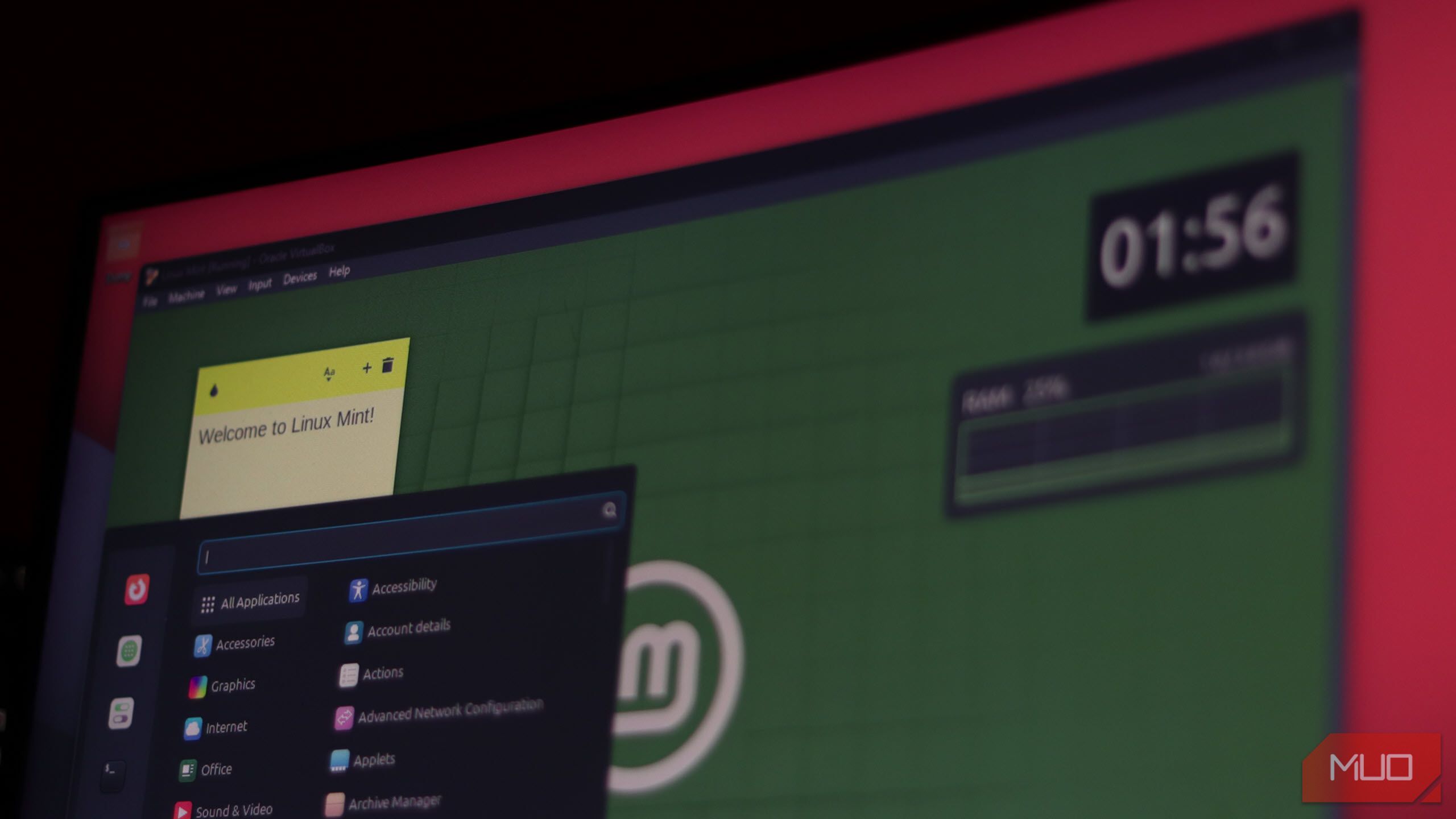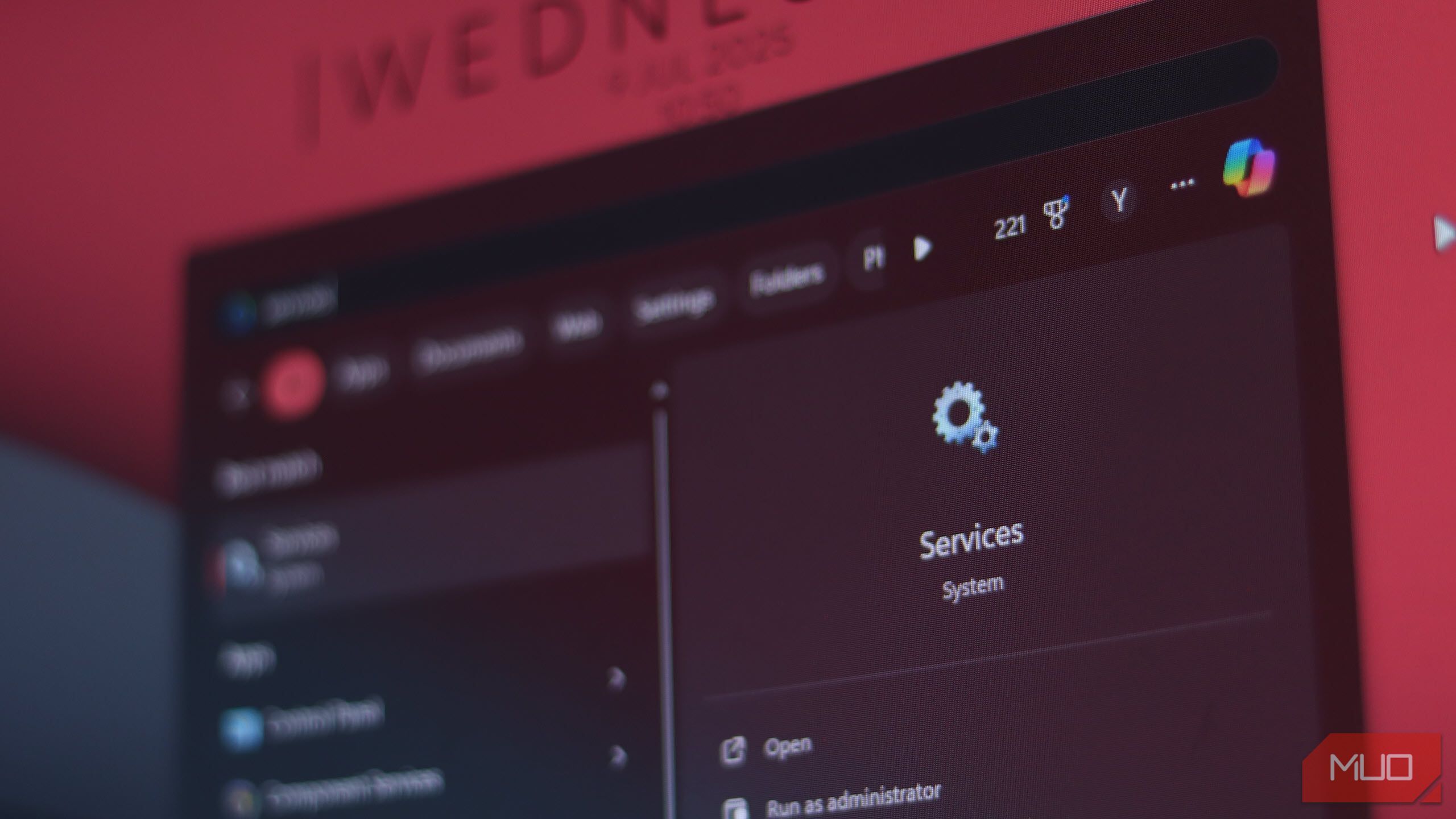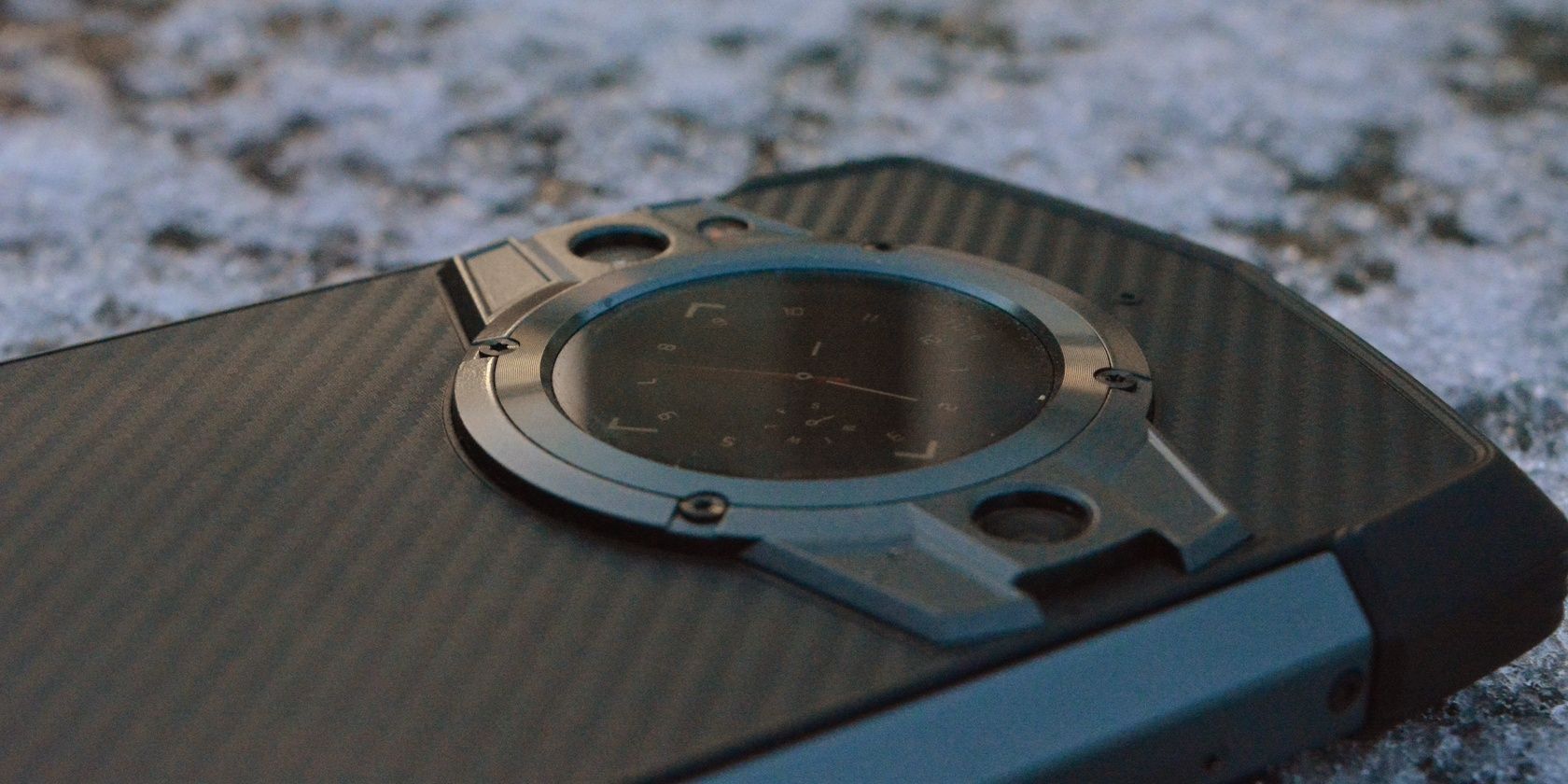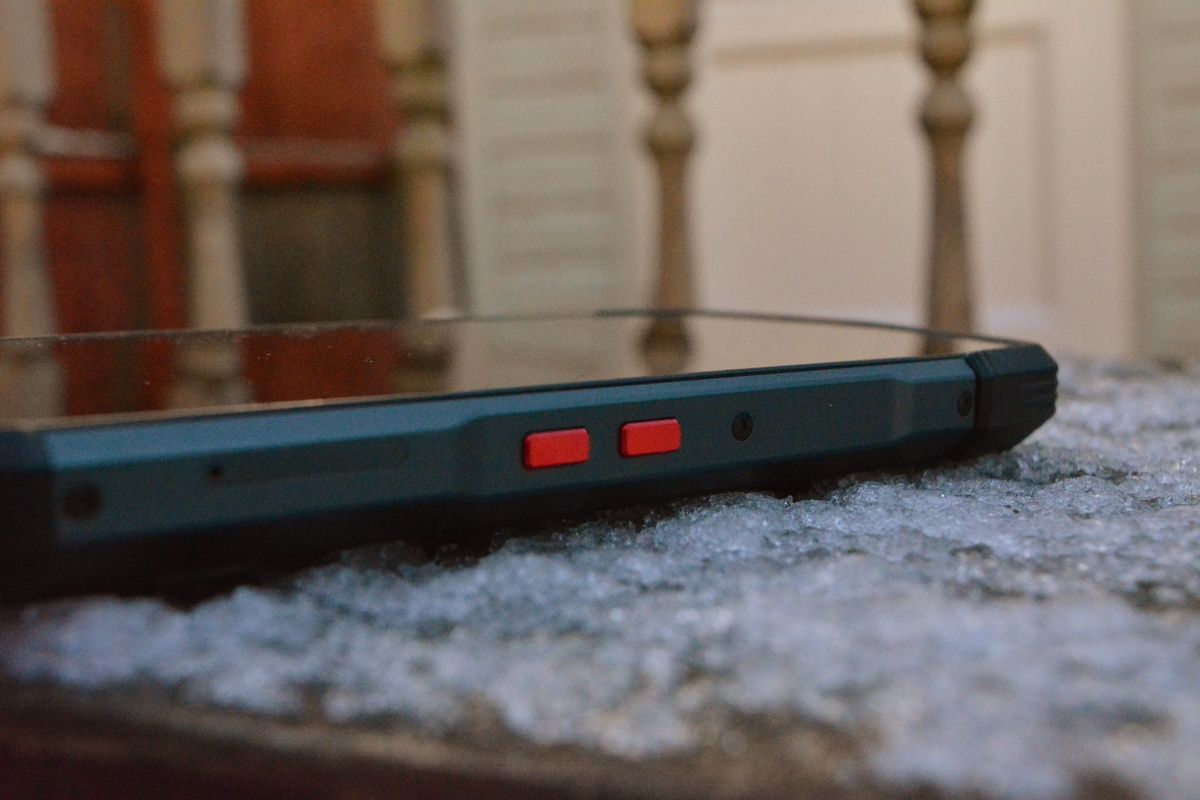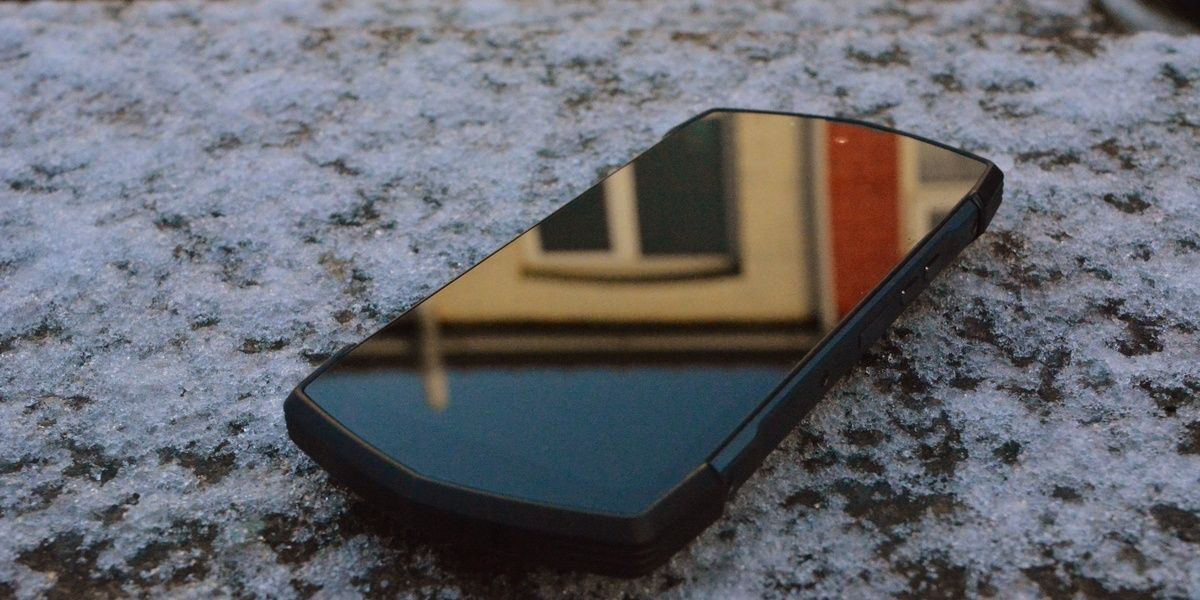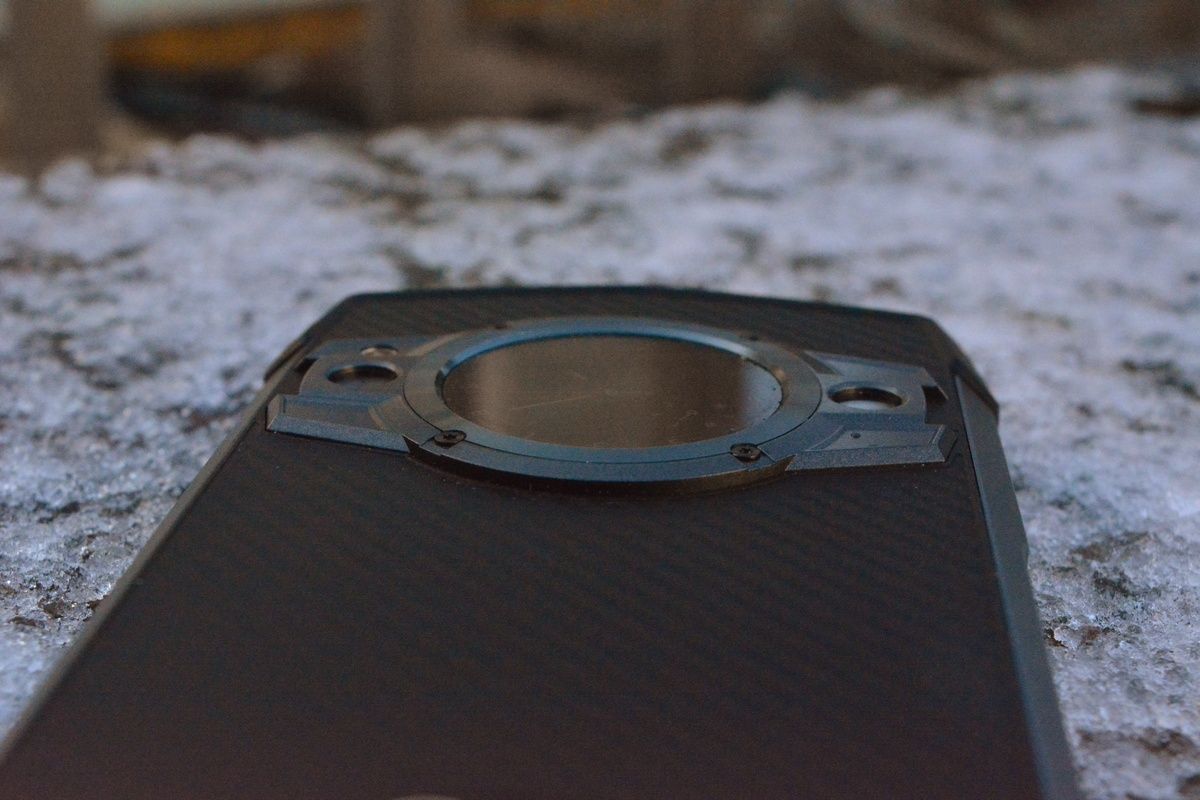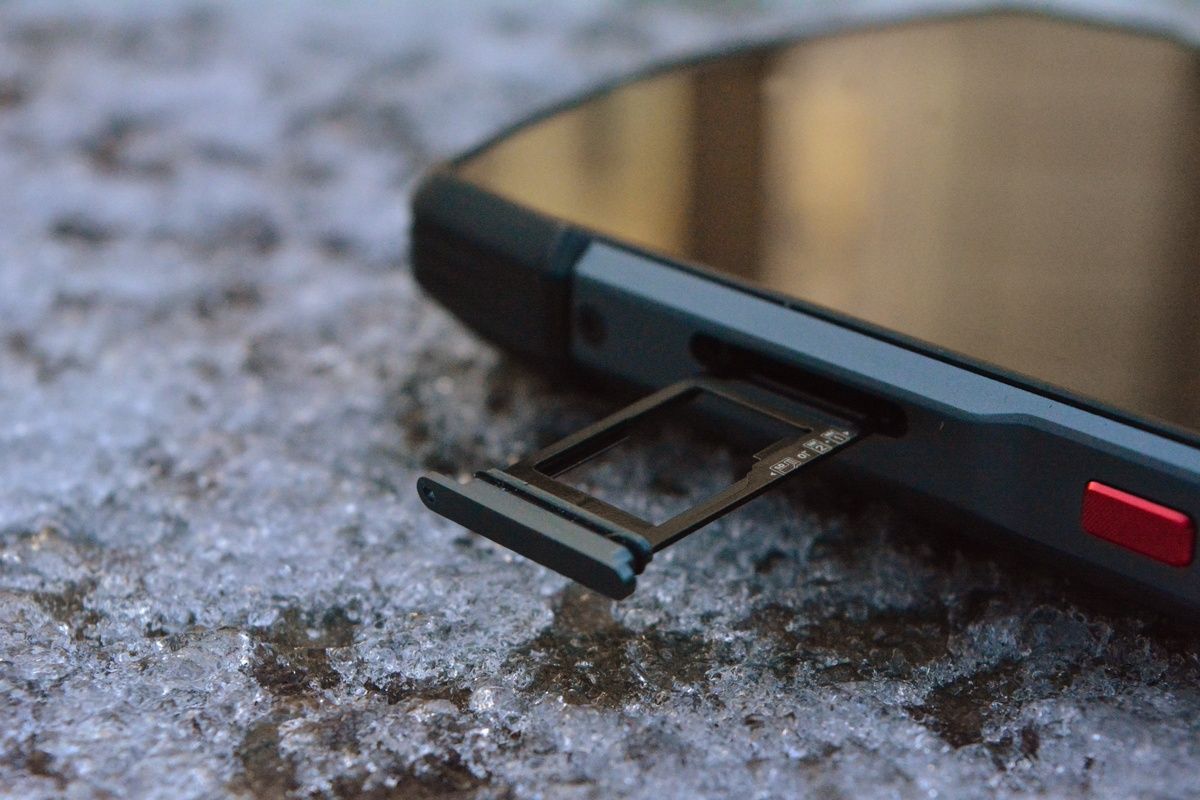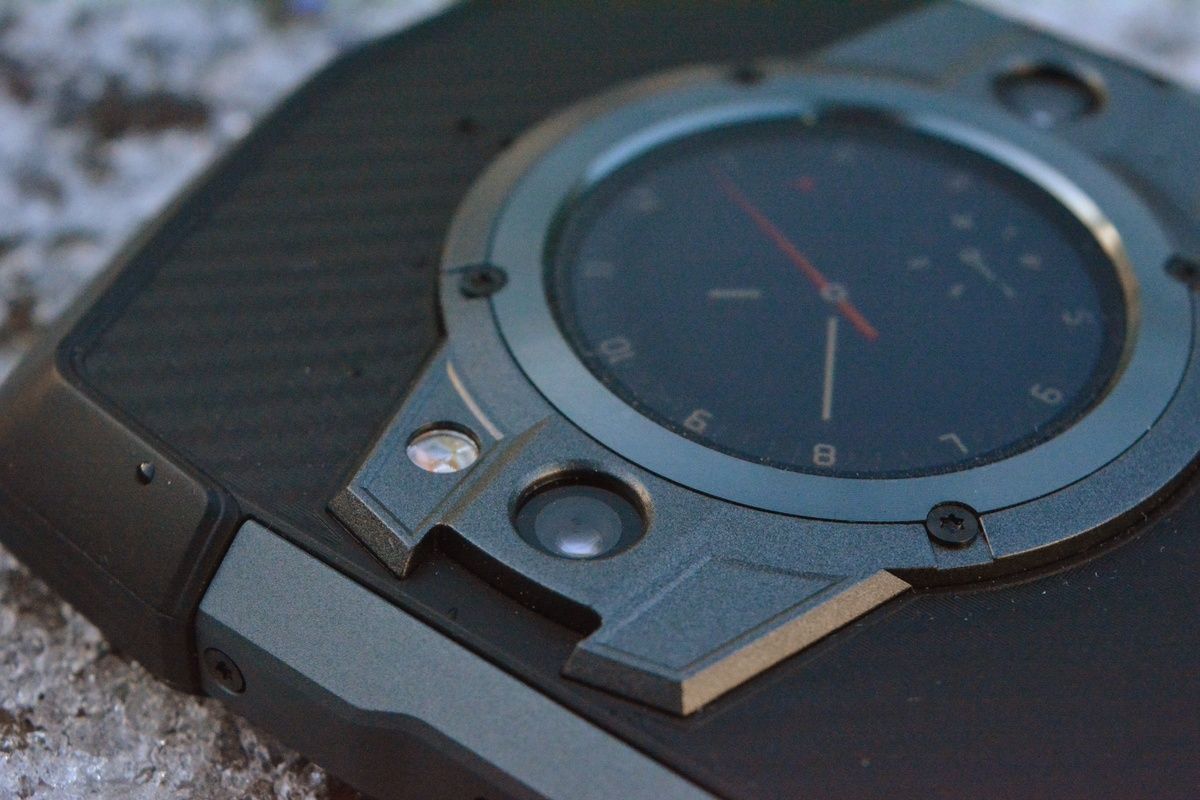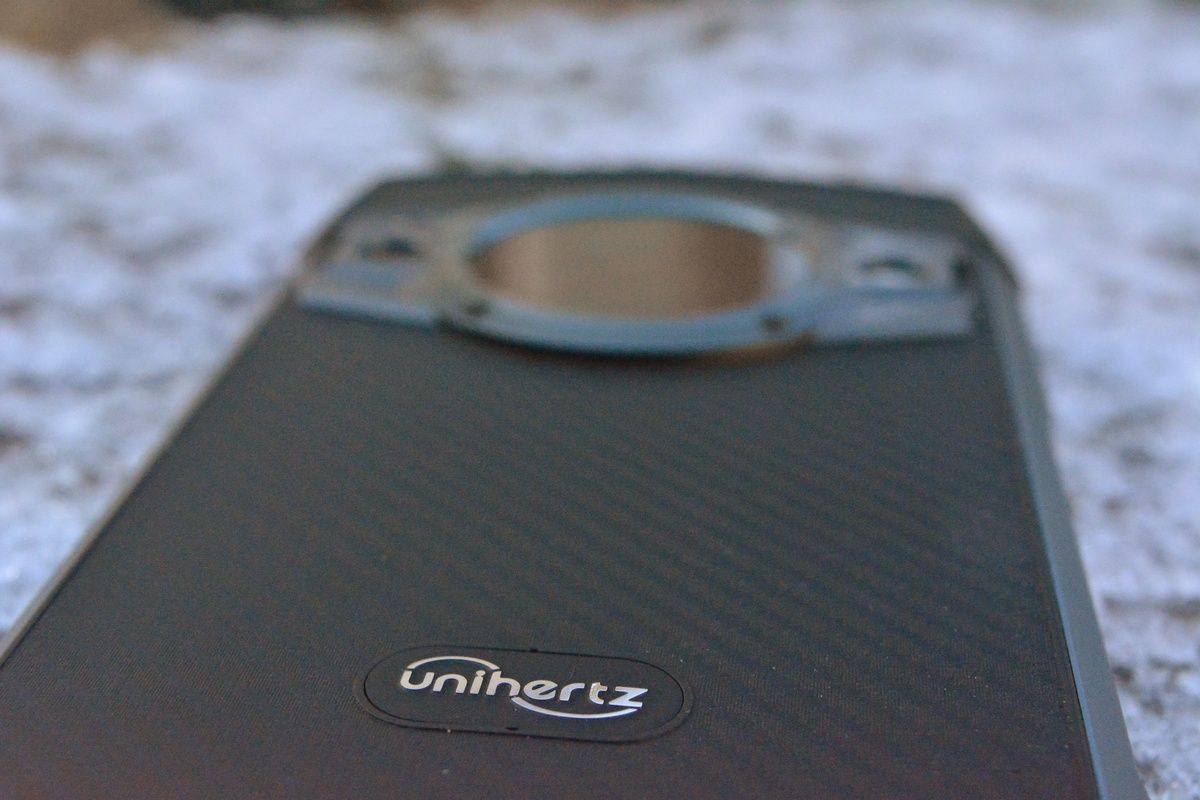Unihertz TickTock
With impressive benchmarks and a sturdy, robust casing, the Unihertz TickTock impresses, but that sub-screen clock might be a deal-breaker.
- Five hardware buttons
- Secondary display on back, akin to a smartwatch
- IP68 water resistance
- Brand: Unihertz
- SoC: Dimensity 700 octa-core
- Display: Front: 6.5-inch, 1080x2340 Back: 1.3-inch, 360x360
- RAM: 8GB
- Storage: 128GB
- Battery: 6000mAh
- Ports: USB Type-C, dual SIM, microSD slot
- Operating System: Android 11
- Front camera: 8MP
- Rear camera: 48MP
- Connectivity: Wi-Fi 802.11 a/b/g/n/ac, Bluetooth 5.1, NFC, infrared port, FM radio
- Others: IP68 water resistance
- Dimensions: 6.93 x 3.37 x 0.59 inches (176 x 85.6 x 14.9mm)
- Weight: 10.8oz (308g)
- Secondary display useful for quick tasks
- Good build quality
- Secondary display is configurable
- Unsuitable for small hands
- Odd shape
- Secondary display not as responsive as main display
- Looks rugged, but isn't
- No reinforced glass display
- Heavy
Ever found yourself too tired to turn your phone over to check the time? Too lazy to press the power button to reveal the lock screen clock? Fancy a clock face built into the back of your smartphone?
If you have answered yes to any of the above, please seek help. And while you’re waiting for that, check out the Unihertz TickTock, an Android 11 smartphone currently available to back as a new Kickstarter project.
The Unihertz TickTock Kickstarter
Currently, you can’t buy a Unihertz TickTock. At the time this review is published, you won’t even be able to pre-order it. Instead, you can get yourself on a list that will give you a 35% off early bird discount when the Kickstarter launches. This could represent a notable saving.
Unihertz has good form with Kickstarter projects, with six completed phones. They include the Atom XL, a walkie-talkie rugged smartphone; and the Titan, a rugged smartphone with QWERTY keyboard.
The Unihertz TickTock is described as a “Unique 5G Dual-Screen Rugged Smartphone.” But while most devices with dual-screen form factors have folding displays, the TickTock has two distinct screens: the main display, and a smaller, circular sub-screen on the back.
Unboxing the Unihertz TickTock
As unboxings go, the Unihertz TickTock was surprisingly low-key. Arriving in a plain white box, the phone itself was safely wrapped in dust and grease-proof packaging.
The TickTock ships alongside a USB Type-C OTG adapter for 3.5mm audio cables and a USB Type-C mains adapter and charge cable. A SIM card tray removal tool is also included.
Our prototype device did not include any documentation, but the released version undoubtedly will.
It’s Rugged, But How Rugged?
I’ve had a couple of rugged phones in the past, so it seemed a good idea to check just how robust the Unihertz TickTock is. While it doesn’t boast the toughest display, certain key toughenings have been made.
Primarily, the TickTock is IP68 water-resistant. As the description reads: “It’s no harm to make a splash on your phone! TickTock is able to withstand dust, dirt, and sand, and to survive up to 1.5m underwater for up to 30 minutes.”
So obviously I tried that out. While I was reasonably confident about the water resistance, the lack of any Gorilla Glass (based on the provided phone specification) perhaps caused me to be more careful than I otherwise would have been.
But I did drop the phone on gravel, chuck it on the sand, and threw it in the sea. Twice.
Once rinsed down in clean water, the phone operated as normal. Other than being caked in sand, the only noticeable effect of this phone abuse was that the speaker seemed to be muffled. Given the size of the speaker holes, however, this should not come as any surprise. Once it had fully dried out, the sound from the speaker seemed to return to normal.
Neither of the phone’s displays was affected by being dropped into freezing cold seawater.
A Raised Bezel That Works
One nice design feature is the raised bezel at the top and bottom of the display. A key advantage of the sub screen is turning your phone face down. Instead of letting the display rub against grit on the table, desk, or whatever, this raised bezel adds about 1mm clearance of the surface. The rubberized coating meanwhile stops the phone from sliding around, again reducing scratching.
Around the back, the clock display is similarly protected.
A quick note on that USB port. While sealed with a useful flap to reduce water ingress, the positioning of the port is poor. Sitting to the right of the phone’s lower diamond point, it doesn’t readily accept some cables. This appears to be due to the thickness of the protective rubberized coating. The difficulty in quickly attaching a USB cable is disappointing, and resulted in a couple of overnight recharges not actually happening.
In terms of being a device that you can drop without destroying it, the Unihertz TickTock seems pretty hardy. Along with any adhesive used in construction, the phone is held together with at least 10 Torx screws.
Unihertz TickTock Specification
With its elongated diamond shape, the TickTock looks quite distinctive. It measures 6.93 x 3.37 x 0.59 inches (176 x 85.6 x 14.9mm), and weighs 10.8oz (308g). That’s pretty hefty as phones go. This is a 5G phone, designed to work on all standard bands.
A Dimensity 700 octa-core CPU sits inside, along with 8GB of memory and 128 UFS 2.1 storage.
The main display is a 6.5 inch LCD with a 1080x2340 pixel resolution, while the secondary display is a 1.3 inch, 360x360 pixel LCD.
The primary rear camera is 48MP, while the front camera is 8MP. The phone also boasts a power button with built-in fingerprint sensor, along with G-sensor, gyroscope, proximity sensor, ambient light sensor, compass, and baroceptor. There is also GPS, using the GPS system, China’s BeiDou, and Russia’s GLONASS.
For connectivity, TickTock is equipped with Wi-Fi (802.11 a/b/g/n/ac) on 2.4Ghz and 5Ghz bands, Bluetooth 5.1, NFC, and an infrared emitter. The phone supports two SIM cards, or one SIM plus a microSD storage expansion.
There is a single USB Type-C port, which supports OTG, and it's equipped with a standard built-in FM radio which requires wired headphones to act as an antenna. Powering this phone is a non-removable 6000mAh battery.
As noted above, the Unihertz TickTock has IP68 splash, water, and dust resistance.
The Phone That's Wearing a Smartwatch
The big draw for this phone, beyond its robustness and waterproofing, is the secondary display. Known as a sub-screen, it’s a circular display, over an inch in diameter, which sort of looks as though the phone itself is wearing a smartwatch.
As well as displaying the time, this screen doubles as a call indicator, notifications window, music player, and camera. Quick and easy tasks that you don’t need to pick up your phone for are perfect for this display. You can also leave your phone face down and surreptitiously check the time in meetings, or perhaps get a quick glimpse of the time. There is a screen time-out setting in place, so the display isn’t permanently turned on. The two red buttons on the side of the phone add extra functionality to the device. By default, the lower red button wakes the sub-screen from standby mode, while the upper button toggles the torch.
And if you don’t like the 16 pre-installed clock faces, can also set your own background. Sadly, however, none of the clocks have an accompanying sound file for realistic, old-school tick-tocks.
Photos and Videos With the Unihertz TickTock
With so many camera and display options, the Unihertz TickTock has plenty to offer fans of selfies, smartphone photography nuts, and vloggers.
Maximum resolution for photography is 8000x6000, in 4:3 ratio, with the 48MP rear camera.
The front-facing 8MP camera sits in the notch, a design choice that continues to look as ridiculous as it sounds. Given the shape of the phone, the presence of the notch seems superfluous, given there's more than enough space for the camera lens to sit above the main display.
For recording videos, the phone is a bit heavy for prolonged sessions. However, you can get a maximum resolution of 1920x1080p Full HD at 16:9 ratio.
Note, however, that the thickness of the phone makes it unsuitable for many gimbals and mounts. It simply isn’t safely gripped in a good number of cases, which is obviously disappointing as no one wants their phone popping out of a spring-loaded grip mount in the middle of filming.
How Does the Unihertz TickTock Benchmark?
With its bright display and comforting weight, this phone seems to do everything right. Testing with PCMark for Android Benchmark (selecting the Work 3.0 benchmark), the Unihertz TickTock performed as follows:


This reveals a Work 3.0 performance score of 8106, maintaining a low temperature and minimal impact on battery charge through testing.
These results leave the phone sitting alongside mid-spec devices such as the OnePlus 6, LG Velvet 4G, and Motorola Moto G40 Fusion. Unsurprisingly there is nothing super-powered about this phone, but it offers a competent mobile experience.
Meanwhile, in real-world use, the phone tended to last up to two days between charges. Usage would be a mix of calls, mobile internet, social networking, taking the odd photo or video, streaming audio, and acting as a mobile hotspot. That’s a pretty broad example of use, and your own experience will no doubt differ. But you can expect a reliable and consistent Android 11 experience with the Unihertz TickTock.
However, fast charging doesn’t appear to work, but it’s not clear if this is due to the battery capacity being so large you don’t notice, or if the feature isn’t enabled in this pre-release model.
The Unihertz TickTock: Not an Everyday Phone
I was initially dubious about a phone with a secondary, rear screen that was basically a clock. In many ways, it looks as though the Unihertz TickTock is wearing a smartwatch, but it has its uses. If anything, it could probably offer more functionality; in its current form it reminds me of my son’s smartwatch, which is intended for children. That’s not an ideal comparison, so additional feature support for the clock would be great.
Overall, however, the Unihertz TickTock is a reliable 5G phone running Android 11, with bright LCD display, dual SIM support, and IP68 protection. There are smaller phones with better specs available, but if you need something big and rugged, the Unihertz TickTock is a good place to start.
With impressive benchmarks and a sturdy, robust casing, the Unihertz TickTock impresses, but that sub-screen clock might be a dealbreaker.


